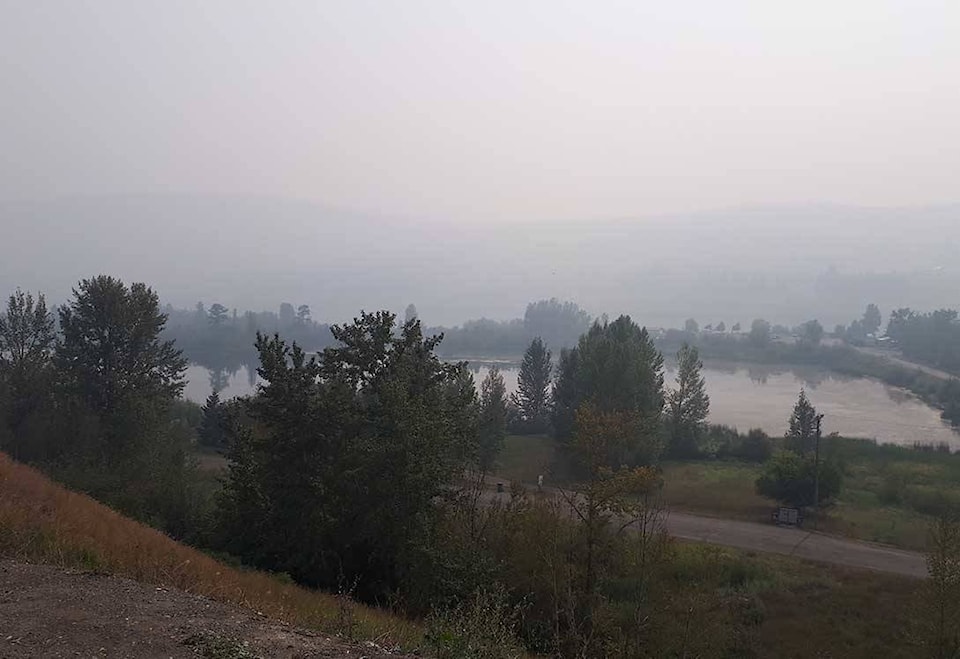Here we are, several weeks into peak fire season and the sky is often overcast with smoke.
This means fewer “growing degree days” which are a combination of heat and light needed for plant growth.
We think here at the home ranch that the garden is not ripening as it should and what hay we have left to put up is not drying from the night’s heavy dew. What is cut is wet from dew longer so by the time it can be turned it is getting later in the day.
It is best to turn hay, fluff it up so the air can get at it but not exposing it too much to the leaching effect of the sun. The best hay is made quickly. The longer it sits before baling, the more nutrients are leached out.
The weather forecasts are still this week for 30 degrees and high 20s. I doubt we will realize those temperatures. The forecasts include smoke warnings but I doubt they really modify the drying forecasts accordingly.
So the farm weather forecast says today is a “fair” drying index. We will see. Yesterday I was getting soaked to the waist walking through uncut fields waiting for it to be dry enough not to clog the haybine I use to cut and put hay into windrows.
This late in the season hay probably needs to be raked twice before it is dry enough to bale.
Baling with moisture in the hay leads to mildewing which isn’t really good for the animals.
The other day an article appeared on an Austrian farmer’s method which in Austria is fairly common.
This method means collecting the hay and taking it to a big barn for drying. Uncured hay is deposited at the barn and picked up by big robot arm much like the grapples on a self loading logging trucks.
This grapple is mounted on an overhead crane which moves from front to back on a track allowing for hay to be put into a drying box in the hayloft for a couple of days.
The hay is dried using warm air collected from just under the roof of the barn and pumped using a circulating fan to dry the hay.
Once dry, the hay can be stacked tighter in other parts of the loft. I have seen such an operation.
This can work for artisan dairies and beef finishing operations, as the hay/forage is of “grain” quality.
In the Austrian model, they don’t want to affect the quality of the cheese and milk, since feeding silage or haylage can taint the taste of the milk and meat products.
That said, animals can be grown for meat and have the flavours of the grass they are grown on, yet finished on specialized and special food which has the best of flavours.
Practically speaking, where we farm haulage (hay silage) can work when we don’t have the drying weather we need, such as early season and late season or smoky season.
David Zirnhelt is a rancher and member of the Cariboo Cattlemen’s Association. He is also chair of the Advisory Committee for the Applied Sustainable Ranching Program at TRU.
